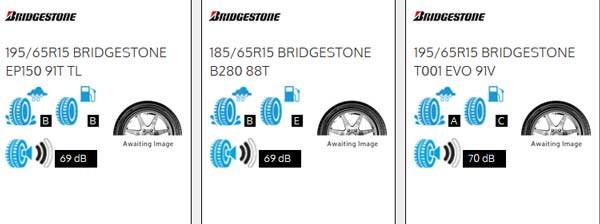Remember the last time you bought some tyres? We’ve got two quick questions about it:
- Did you use the EU tyre labelling information to guide your choice?
- If not, did you even know the EU labelling system existed?
If the answer to both questions was a ‘no’, you’re probably not alone. A recent survey has suggested that the majority of drivers aren’t even aware of the labelling system, let alone using it to guide their purchases.
Carried out by Just Tyres, the research suggested that only one in nine respondents (10.8%) took account of the EU labelling information when buying a tyre. Further, only one in six (15.5%) knew about the labelling system, with 17.5% being uncertain if they had heard about it or not.
Now admittedly, with just 102 customers surveyed, we can’t definitively say that these numbers fairly represent the whole population. But it does seem to show that an awful lot of people aren’t making use of the EU labelling information.
And that’s a shame, because the information could be genuinely useful to many drivers.
What’s on the EU tyre labels?
Since 2012, it’s been mandatory for tyres to be supplied carrying certain information about their performance. These labels look very similar to those seen on the side of white goods, and they serve a similar purpose — they are designed to help consumers make like-for-like comparisons between different brands.
We’ll look at interpreting the information in a forthcoming blog post, but essentially each tyre carries three ratings:
- A rolling resistance or fuel efficiency rating, on an A – G scale.
- A wet grip rating, again on an A – G scale.
- A noise emission rating, in decibels.
The differences that these ratings reveal are not trivial. For example, the difference in stopping distance on a wet road between tyres rated A and those rated G could be 18 metres. That’s four car lengths.
Why don’t consumers tend to use the ratings?
Undoubtedly, the majority of drivers would prefer tyres that gave them better fuel efficiency, superior grip in the wet, and lower road noise. So why aren’t they using the labelling more when they buy?
It’s probably two main factors.
The first is obviously awareness of the information. Drivers aren’t using it because they don’t know that it’s there. Not to blow our own trumpet, but we think the BK Tyres website does a good job of displaying this prominently, making it straightforward to compare your options.
Secondly, drivers just haven’t yet adopted a culture of comparing tyres. There is still a view that ‘a tyre is a tyre is a tyre’. Whilst we carefully weigh up purchases of electrical goods based on perceptions of value, that may be more of a rarity when it comes to tyres. After all, partly worn tyres are still popular, despite offering terrible value for money.
Not passionate about tyres?
We find it hard to believe, but apparently not everyone gets that passionate about tyre choice. It could be that after reading this, you decide life’s too short to compare EU tyre labels when you’re buying. And that’s fine. If that’s the case, our expert fitters will be happy simply to supply the best all-round tyre for your particular vehicle and budget. On the other hand, if you want to discuss all the pros and cons of tyre choice, we’re happy to do that too.
Your choice, but either way, order online or get in touch for smashing customer service and competitive prices.

